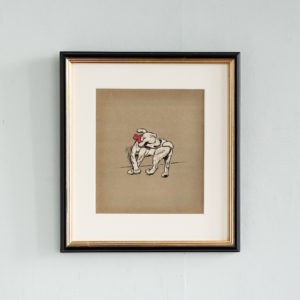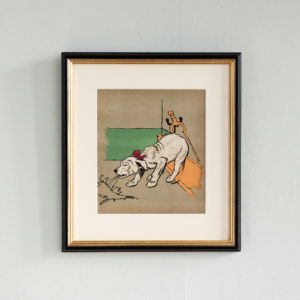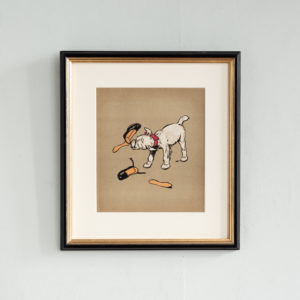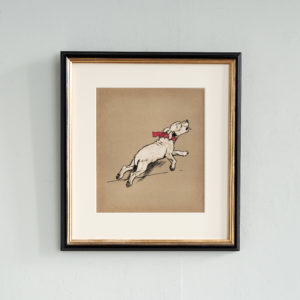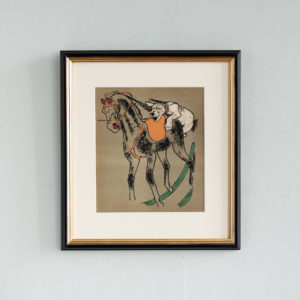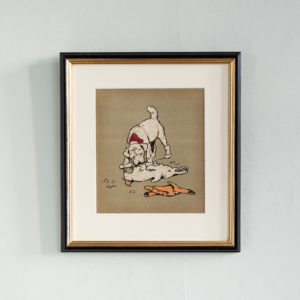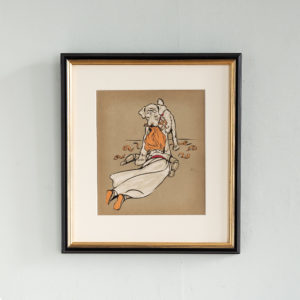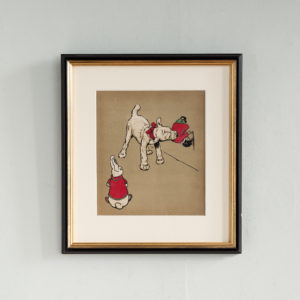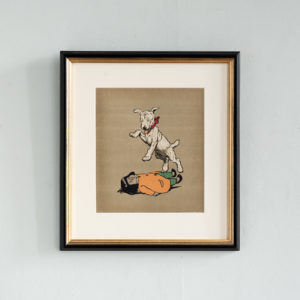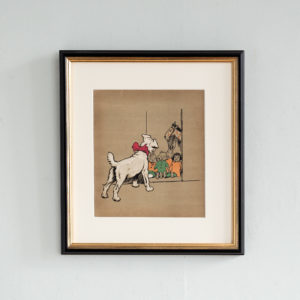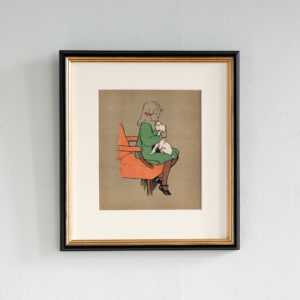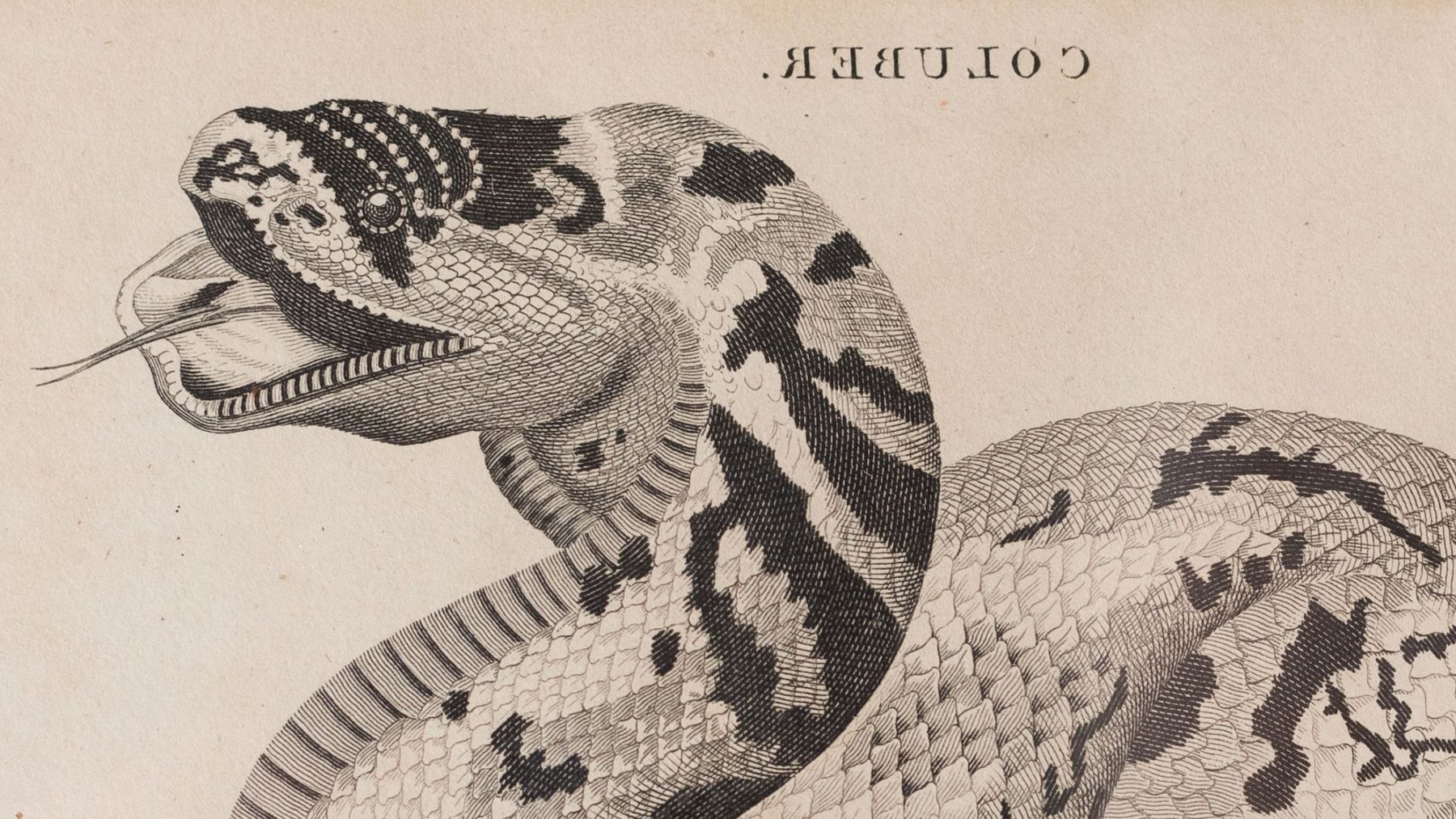
Prints
Bring life and colour to an interior with the inclusion of prints and art. Our selection provides a broad variety of lithographs and printed imagery. We specialise in natural history, plant and animal prints. Also collections of contemporary art including mid twentieth century artists like Picasso, Matisse and Braque. We also focus on maps of London including our local area Vauxhall, Central London and the River Thames.
967 items found
Page 3 of 10
-
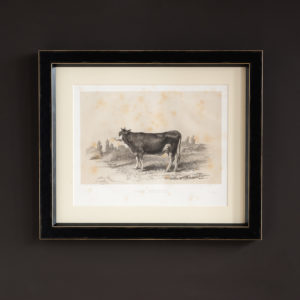
Original lithographs of Cattle Breeds published 1862, ‘Vache Mancelle’,
£300 eachOriginal lithographs of Cattle Breeds published 1862, ‘Vache Mancelle’,
Printed by Lemercier of Paris.£300 each -
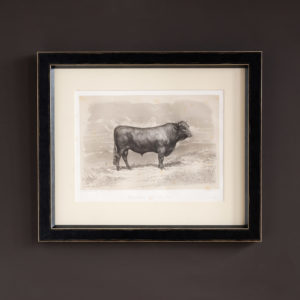
Original lithographs of Cattle Breeds published 1862, ‘Taureau de Salers’,
£300 eachOriginal lithographs of Cattle Breeds published 1862, ‘Taureau de Salers’,
Printed by Lemercier of Paris.£300 each -
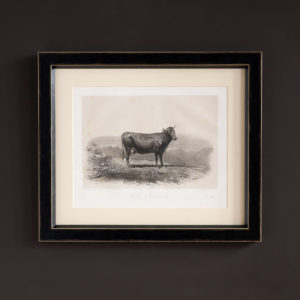
Original lithographs of Cattle Breeds published 1862, ‘Vache D’Oberhasli’,
£300 eachOriginal lithographs of Cattle Breeds published 1862, ‘Vache D’Oberhasli’,
Printed by Lemercier of Paris.£300 each -
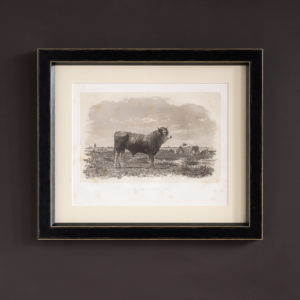
Original lithographs of Cattle Breeds published 1862, ‘Taureau Landais’,
£300 eachOriginal lithographs of Cattle Breeds published 1862, ‘Taureau Landais’,
Printed by Lemercier of Paris.£300 each -
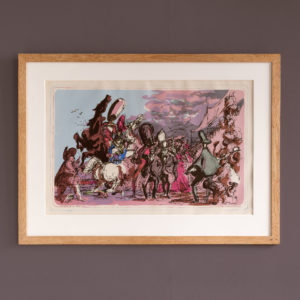
This England
£300This England
Framed and mounted, coloured lithograph by the Anglo-Polish draughtsman and expressionist painter Feliks Topolski showing Winston Churchill and Clement Atlee on The Mall. The work forms part of the post war Prints for Schools series. The purpose of Prints for Schools was to provide schools and other public institutions with examples of work by good artists at a low cost. The lithographs were all of uniform size so that they could be interchangeable in a single frame or group of frames to allow them to be rotated. The contributing artists were chosen by a committee chaired by the art historian Herbert Read.£300 -
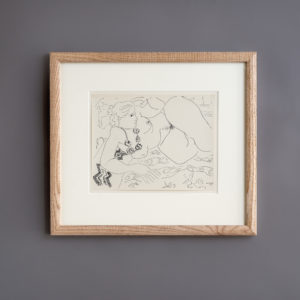
Cahiers D’Art, Dessins de Matisse
£300 eachCahiers D’Art, Dessins de Matisse
Cahiers d'Art is a French artistic and literary journal originally founded in 1926 by Christian Zervos, a Greek philosopher, editor. Born in 1889 in Argostoli on the Greek island of Cephalonia he was brought up in Alexandria, Egypt, finally moving to Paris in 1922. In 1924 Zervos joined the publishing firm Editions Morancé writing art articles for the magazine L'Art d'aujourd '. As an editor, he met many of the artists about whom the magazine wrote: Henri Matisse, Georges Braque, Ferdinand Léger, and Pablo Picasso. He left Morancé in 1926 to found his own journal Cahiers d'art becoming simultaneously publisher, director, model maker, chief editor and main editor. Each issue balanced primitive arts with the modern and contemporary arts and articles by art critics with more literary and poetic texts. According to Zervos, the interest in prehistoric, ancient and extra-European arts was necessary to get a glimpse of contemporary art. It was Zervos who took on the enormous task of documenting all the works of Pablo Picasso into a33-volume catalogue raisonnée, published between 1932 and 1978. One of his deepest wishes was to build up with Cahiers d’Art the visual archives of the artists he considered important. Zervos married Yvonne Marion who ran an art gallery, Galerie du Dragon, next to the location of her husband's shop, the rue Dragon on the left bank of Paris. Madame Zervos became an integral part of her husband's accomplishment and assembling their art collection. Initially published from 1926 to 1960 Cahiers d'Art still exists today after Swedish collector Staffan Ahrenberg purchased the publication and relaunched it in October 2012.£300 each -
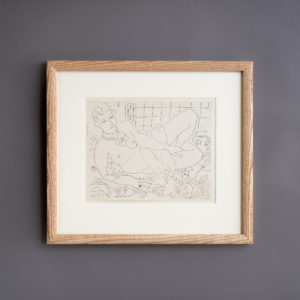
Cahiers D’Art, Dessins de Matisse
£300 eachCahiers D’Art, Dessins de Matisse
Cahiers d'Art is a French artistic and literary journal originally founded in 1926 by Christian Zervos, a Greek philosopher, editor. Born in 1889 in Argostoli on the Greek island of Cephalonia he was brought up in Alexandria, Egypt, finally moving to Paris in 1922. In 1924 Zervos joined the publishing firm Editions Morancé writing art articles for the magazine L'Art d'aujourd '. As an editor, he met many of the artists about whom the magazine wrote: Henri Matisse, Georges Braque, Ferdinand Léger, and Pablo Picasso. He left Morancé in 1926 to found his own journal Cahiers d'art becoming simultaneously publisher, director, model maker, chief editor and main editor. Each issue balanced primitive arts with the modern and contemporary arts and articles by art critics with more literary and poetic texts. According to Zervos, the interest in prehistoric, ancient and extra-European arts was necessary to get a glimpse of contemporary art. It was Zervos who took on the enormous task of documenting all the works of Pablo Picasso into a33-volume catalogue raisonnée, published between 1932 and 1978. One of his deepest wishes was to build up with Cahiers d’Art the visual archives of the artists he considered important. Zervos married Yvonne Marion who ran an art gallery, Galerie du Dragon, next to the location of her husband's shop, the rue Dragon on the left bank of Paris. Madame Zervos became an integral part of her husband's accomplishment and assembling their art collection. Initially published from 1926 to 1960 Cahiers d'Art still exists today after Swedish collector Staffan Ahrenberg purchased the publication and relaunched it in October 2012.£300 each -
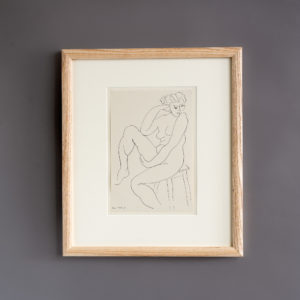
Cahiers D’Art, Dessins de Matisse
£300 eachCahiers D’Art, Dessins de Matisse
Cahiers d'Art is a French artistic and literary journal originally founded in 1926 by Christian Zervos, a Greek philosopher, editor. Born in 1889 in Argostoli on the Greek island of Cephalonia he was brought up in Alexandria, Egypt, finally moving to Paris in 1922. In 1924 Zervos joined the publishing firm Editions Morancé writing art articles for the magazine L'Art d'aujourd '. As an editor, he met many of the artists about whom the magazine wrote: Henri Matisse, Georges Braque, Ferdinand Léger, and Pablo Picasso. He left Morancé in 1926 to found his own journal Cahiers d'art becoming simultaneously publisher, director, model maker, chief editor and main editor. Each issue balanced primitive arts with the modern and contemporary arts and articles by art critics with more literary and poetic texts. According to Zervos, the interest in prehistoric, ancient and extra-European arts was necessary to get a glimpse of contemporary art. It was Zervos who took on the enormous task of documenting all the works of Pablo Picasso into a33-volume catalogue raisonnée, published between 1932 and 1978. One of his deepest wishes was to build up with Cahiers d’Art the visual archives of the artists he considered important. Zervos married Yvonne Marion who ran an art gallery, Galerie du Dragon, next to the location of her husband's shop, the rue Dragon on the left bank of Paris. Madame Zervos became an integral part of her husband's accomplishment and assembling their art collection. Initially published from 1926 to 1960 Cahiers d'Art still exists today after Swedish collector Staffan Ahrenberg purchased the publication and relaunched it in October 2012.£300 each -
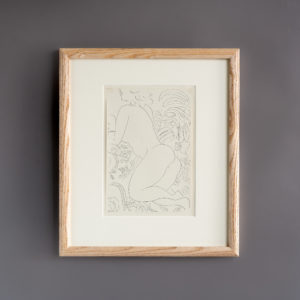
Cahiers D’Art, Dessins de Matisse
£300 eachCahiers D’Art, Dessins de Matisse
Cahiers d'Art is a French artistic and literary journal originally founded in 1926 by Christian Zervos, a Greek philosopher, editor. Born in 1889 in Argostoli on the Greek island of Cephalonia he was brought up in Alexandria, Egypt, finally moving to Paris in 1922. In 1924 Zervos joined the publishing firm Editions Morancé writing art articles for the magazine L'Art d'aujourd '. As an editor, he met many of the artists about whom the magazine wrote: Henri Matisse, Georges Braque, Ferdinand Léger, and Pablo Picasso. He left Morancé in 1926 to found his own journal Cahiers d'art becoming simultaneously publisher, director, model maker, chief editor and main editor. Each issue balanced primitive arts with the modern and contemporary arts and articles by art critics with more literary and poetic texts. According to Zervos, the interest in prehistoric, ancient and extra-European arts was necessary to get a glimpse of contemporary art. It was Zervos who took on the enormous task of documenting all the works of Pablo Picasso into a33-volume catalogue raisonnée, published between 1932 and 1978. One of his deepest wishes was to build up with Cahiers d’Art the visual archives of the artists he considered important. Zervos married Yvonne Marion who ran an art gallery, Galerie du Dragon, next to the location of her husband's shop, the rue Dragon on the left bank of Paris. Madame Zervos became an integral part of her husband's accomplishment and assembling their art collection. Initially published from 1926 to 1960 Cahiers d'Art still exists today after Swedish collector Staffan Ahrenberg purchased the publication and relaunched it in October 2012.£300 each -
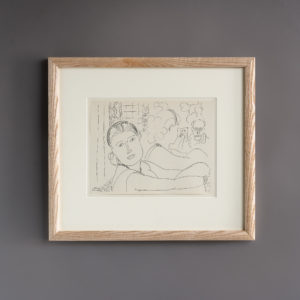
Cahiers D’Art, Dessins de Matisse
£300 eachCahiers D’Art, Dessins de Matisse
Cahiers d'Art is a French artistic and literary journal originally founded in 1926 by Christian Zervos, a Greek philosopher, editor. Born in 1889 in Argostoli on the Greek island of Cephalonia he was brought up in Alexandria, Egypt, finally moving to Paris in 1922. In 1924 Zervos joined the publishing firm Editions Morancé writing art articles for the magazine L'Art d'aujourd '. As an editor, he met many of the artists about whom the magazine wrote: Henri Matisse, Georges Braque, Ferdinand Léger, and Pablo Picasso. He left Morancé in 1926 to found his own journal Cahiers d'art becoming simultaneously publisher, director, model maker, chief editor and main editor. Each issue balanced primitive arts with the modern and contemporary arts and articles by art critics with more literary and poetic texts. According to Zervos, the interest in prehistoric, ancient and extra-European arts was necessary to get a glimpse of contemporary art. It was Zervos who took on the enormous task of documenting all the works of Pablo Picasso into a33-volume catalogue raisonnée, published between 1932 and 1978. One of his deepest wishes was to build up with Cahiers d’Art the visual archives of the artists he considered important. Zervos married Yvonne Marion who ran an art gallery, Galerie du Dragon, next to the location of her husband's shop, the rue Dragon on the left bank of Paris. Madame Zervos became an integral part of her husband's accomplishment and assembling their art collection. Initially published from 1926 to 1960 Cahiers d'Art still exists today after Swedish collector Staffan Ahrenberg purchased the publication and relaunched it in October 2012.£300 each -
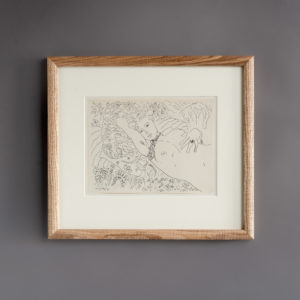
Cahiers D’Art, Dessins de Matisse
£300 eachCahiers D’Art, Dessins de Matisse
Cahiers d'Art is a French artistic and literary journal originally founded in 1926 by Christian Zervos, a Greek philosopher, editor. Born in 1889 in Argostoli on the Greek island of Cephalonia he was brought up in Alexandria, Egypt, finally moving to Paris in 1922. In 1924 Zervos joined the publishing firm Editions Morancé writing art articles for the magazine L'Art d'aujourd '. As an editor, he met many of the artists about whom the magazine wrote: Henri Matisse, Georges Braque, Ferdinand Léger, and Pablo Picasso. He left Morancé in 1926 to found his own journal Cahiers d'art becoming simultaneously publisher, director, model maker, chief editor and main editor. Each issue balanced primitive arts with the modern and contemporary arts and articles by art critics with more literary and poetic texts. According to Zervos, the interest in prehistoric, ancient and extra-European arts was necessary to get a glimpse of contemporary art. It was Zervos who took on the enormous task of documenting all the works of Pablo Picasso into a33-volume catalogue raisonnée, published between 1932 and 1978. One of his deepest wishes was to build up with Cahiers d’Art the visual archives of the artists he considered important. Zervos married Yvonne Marion who ran an art gallery, Galerie du Dragon, next to the location of her husband's shop, the rue Dragon on the left bank of Paris. Madame Zervos became an integral part of her husband's accomplishment and assembling their art collection. Initially published from 1926 to 1960 Cahiers d'Art still exists today after Swedish collector Staffan Ahrenberg purchased the publication and relaunched it in October 2012.£300 each -
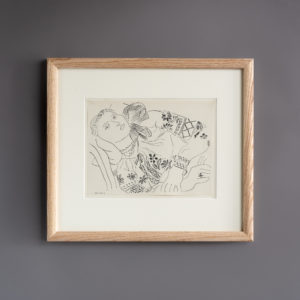
Cahiers D’Art, Dessins de Matisse
£300 eachCahiers D’Art, Dessins de Matisse
Cahiers d'Art is a French artistic and literary journal originally founded in 1926 by Christian Zervos, a Greek philosopher, editor. Born in 1889 in Argostoli on the Greek island of Cephalonia he was brought up in Alexandria, Egypt, finally moving to Paris in 1922. In 1924 Zervos joined the publishing firm Editions Morancé writing art articles for the magazine L'Art d'aujourd '. As an editor, he met many of the artists about whom the magazine wrote: Henri Matisse, Georges Braque, Ferdinand Léger, and Pablo Picasso. He left Morancé in 1926 to found his own journal Cahiers d'art becoming simultaneously publisher, director, model maker, chief editor and main editor. Each issue balanced primitive arts with the modern and contemporary arts and articles by art critics with more literary and poetic texts. According to Zervos, the interest in prehistoric, ancient and extra-European arts was necessary to get a glimpse of contemporary art. It was Zervos who took on the enormous task of documenting all the works of Pablo Picasso into a33-volume catalogue raisonnée, published between 1932 and 1978. One of his deepest wishes was to build up with Cahiers d’Art the visual archives of the artists he considered important. Zervos married Yvonne Marion who ran an art gallery, Galerie du Dragon, next to the location of her husband's shop, the rue Dragon on the left bank of Paris. Madame Zervos became an integral part of her husband's accomplishment and assembling their art collection. Initially published from 1926 to 1960 Cahiers d'Art still exists today after Swedish collector Staffan Ahrenberg purchased the publication and relaunched it in October 2012.£300 each -
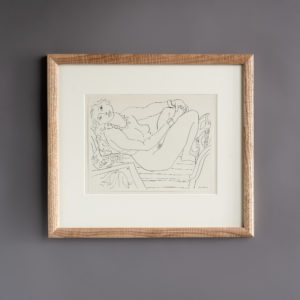
Cahiers D’Art, Dessins de Matisse
£300 eachCahiers D’Art, Dessins de Matisse
Cahiers d'Art is a French artistic and literary journal originally founded in 1926 by Christian Zervos, a Greek philosopher, editor. Born in 1889 in Argostoli on the Greek island of Cephalonia he was brought up in Alexandria, Egypt, finally moving to Paris in 1922. In 1924 Zervos joined the publishing firm Editions Morancé writing art articles for the magazine L'Art d'aujourd '. As an editor, he met many of the artists about whom the magazine wrote: Henri Matisse, Georges Braque, Ferdinand Léger, and Pablo Picasso. He left Morancé in 1926 to found his own journal Cahiers d'art becoming simultaneously publisher, director, model maker, chief editor and main editor. Each issue balanced primitive arts with the modern and contemporary arts and articles by art critics with more literary and poetic texts. According to Zervos, the interest in prehistoric, ancient and extra-European arts was necessary to get a glimpse of contemporary art. It was Zervos who took on the enormous task of documenting all the works of Pablo Picasso into a33-volume catalogue raisonnée, published between 1932 and 1978. One of his deepest wishes was to build up with Cahiers d’Art the visual archives of the artists he considered important. Zervos married Yvonne Marion who ran an art gallery, Galerie du Dragon, next to the location of her husband's shop, the rue Dragon on the left bank of Paris. Madame Zervos became an integral part of her husband's accomplishment and assembling their art collection. Initially published from 1926 to 1960 Cahiers d'Art still exists today after Swedish collector Staffan Ahrenberg purchased the publication and relaunched it in October 2012.£300 each -
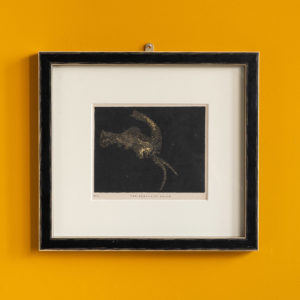
“The Beauty of the Heavens: A Pictorial Display of The Astronomical Phenomena of The Universe” by Charles Blunt, ‘The Nebula of Orion’,
£295 each“The Beauty of the Heavens: A Pictorial Display of The Astronomical Phenomena of The Universe” by Charles Blunt, ‘The Nebula of Orion’,
In the mid-19th century, Home Education had become very popular for the masses and lecturer, Charles Blunt seeing a gap in the market came up with these illustrations. Blunt who specialised in astronomy and natural philosophy, saw the need for a series of ‘accurate yet popular’ plates illustrating the known Universe. These hand-finished aquatints prints were based on Blunt’s own drawings, depicting celestial and astrological subjects.£295 each -
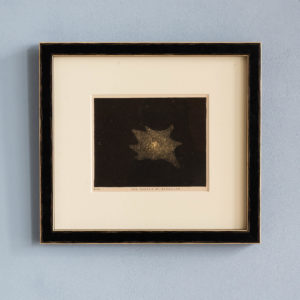
“The Beauty of the Heavens: A Pictorial Display of The Astronomical Phenomena of The Universe” by Charles Blunt, ‘The Nebula of Hercules’,
£295 each“The Beauty of the Heavens: A Pictorial Display of The Astronomical Phenomena of The Universe” by Charles Blunt, ‘The Nebula of Hercules’,
In the mid-19th century, Home Education had become very popular for the masses and lecturer, Charles Blunt seeing a gap in the market came up with these illustrations. Blunt who specialised in astronomy and natural philosophy, saw the need for a series of ‘accurate yet popular’ plates illustrating the known Universe. These hand-finished aquatints prints were based on Blunt’s own drawings, depicting celestial and astrological subjects.£295 each -
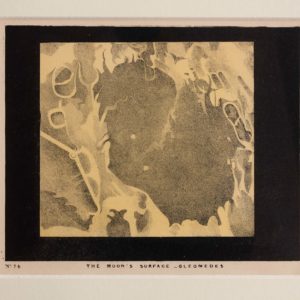
“The Beauty of the Heavens: A Pictorial Display of The Astronomical Phenomena of The Universe” by Charles Blunt, ‘The Moon’s Surface – Cleomedes’,
£295 each“The Beauty of the Heavens: A Pictorial Display of The Astronomical Phenomena of The Universe” by Charles Blunt, ‘The Moon’s Surface – Cleomedes’,
In the mid-19th century, Home Education had become very popular for the masses and lecturer, Charles Blunt seeing a gap in the market came up with these illustrations. Blunt who specialised in astronomy and natural philosophy, saw the need for a series of ‘accurate yet popular’ plates illustrating the known Universe. These hand-finished aquatints prints were based on Blunt’s own drawings, depicting celestial and astrological subjects.£295 each -
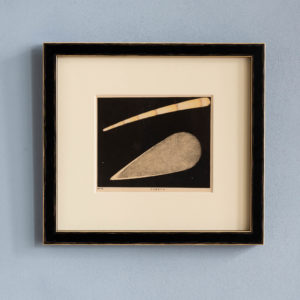
“The Beauty of the Heavens: A Pictorial Display of The Astronomical Phenomena of The Universe” by Charles Blunt, ‘Comets’,
£295 each“The Beauty of the Heavens: A Pictorial Display of The Astronomical Phenomena of The Universe” by Charles Blunt, ‘Comets’,
In the mid-19th century, Home Education had become very popular for the masses and lecturer, Charles Blunt seeing a gap in the market came up with these illustrations. Blunt who specialised in astronomy and natural philosophy, saw the need for a series of ‘accurate yet popular’ plates illustrating the known Universe. These hand-finished aquatints prints were based on Blunt’s own drawings, depicting celestial and astrological subjects.£295 each -
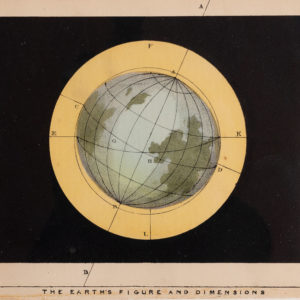
“The Beauty of the Heavens: A Pictorial Display of The Astronomical Phenomena of The Universe” by Charles Blunt, ‘The Earth’s Figure and Dimensions’,
£295 each“The Beauty of the Heavens: A Pictorial Display of The Astronomical Phenomena of The Universe” by Charles Blunt, ‘The Earth’s Figure and Dimensions’,
In the mid-19th century, Home Education had become very popular for the masses and lecturer, Charles Blunt seeing a gap in the market came up with these illustrations. Blunt who specialised in astronomy and natural philosophy, saw the need for a series of ‘accurate yet popular’ plates illustrating the known Universe. These hand-finished aquatints prints were based on Blunt’s own drawings, depicting celestial and astrological subjects.£295 each -
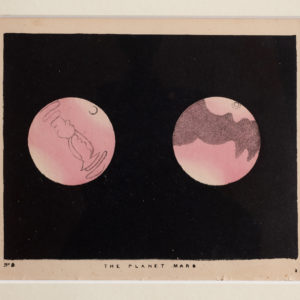
“The Beauty of the Heavens: A Pictorial Display of The Astronomical Phenomena of The Universe” by Charles Blunt, ‘The Planet Mars’,
£295 each“The Beauty of the Heavens: A Pictorial Display of The Astronomical Phenomena of The Universe” by Charles Blunt, ‘The Planet Mars’,
In the mid-19th century, Home Education had become very popular for the masses and lecturer, Charles Blunt seeing a gap in the market came up with these illustrations. Blunt who specialised in astronomy and natural philosophy, saw the need for a series of ‘accurate yet popular’ plates illustrating the known Universe. These hand-finished aquatints prints were based on Blunt’s own drawings, depicting celestial and astrological subjects.£295 each -
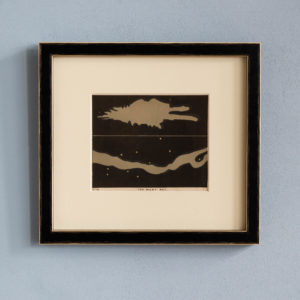
“The Beauty of the Heavens: A Pictorial Display of The Astronomical Phenomena of The Universe” by Charles Blunt, ‘The Milky Way’,
£295 each“The Beauty of the Heavens: A Pictorial Display of The Astronomical Phenomena of The Universe” by Charles Blunt, ‘The Milky Way’,
In the mid-19th century, Home Education had become very popular for the masses and lecturer, Charles Blunt seeing a gap in the market came up with these illustrations. Blunt who specialised in astronomy and natural philosophy, saw the need for a series of ‘accurate yet popular’ plates illustrating the known Universe. These hand-finished aquatints prints were based on Blunt’s own drawings, depicting celestial and astrological subjects.£295 each -
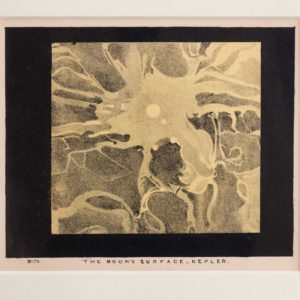
“The Beauty of the Heavens: A Pictorial Display of The Astronomical Phenomena of The Universe” by Charles Blunt, ‘The Moon’s Surface – Kepler’,
£295 each“The Beauty of the Heavens: A Pictorial Display of The Astronomical Phenomena of The Universe” by Charles Blunt, ‘The Moon’s Surface – Kepler’,
In the mid-19th century, Home Education had become very popular for the masses and lecturer, Charles Blunt seeing a gap in the market came up with these illustrations. Blunt who specialised in astronomy and natural philosophy, saw the need for a series of ‘accurate yet popular’ plates illustrating the known Universe. These hand-finished aquatints prints were based on Blunt’s own drawings, depicting celestial and astrological subjects.£295 each -
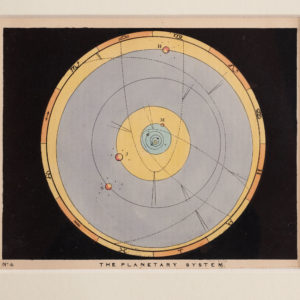
“The Beauty of the Heavens: A Pictorial Display of The Astronomical Phenomena of The Universe” by Charles Blunt, ‘The Planetary System’,
£295 each“The Beauty of the Heavens: A Pictorial Display of The Astronomical Phenomena of The Universe” by Charles Blunt, ‘The Planetary System’,
In the mid-19th century, Home Education had become very popular for the masses and lecturer, Charles Blunt seeing a gap in the market came up with these illustrations. Blunt who specialised in astronomy and natural philosophy, saw the need for a series of ‘accurate yet popular’ plates illustrating the known Universe. These hand-finished aquatints prints were based on Blunt’s own drawings, depicting celestial and astrological subjects.£295 each -
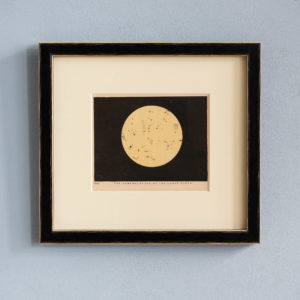
“The Beauty of the Heavens: A Pictorial Display of The Astronomical Phenomena of The Universe” by Charles Blunt, ‘The Nomenclature of the Lunar Spots’,
£295 each“The Beauty of the Heavens: A Pictorial Display of The Astronomical Phenomena of The Universe” by Charles Blunt, ‘The Nomenclature of the Lunar Spots’,
In the mid-19th century, Home Education had become very popular for the masses and lecturer, Charles Blunt seeing a gap in the market came up with these illustrations. Blunt who specialised in astronomy and natural philosophy, saw the need for a series of ‘accurate yet popular’ plates illustrating the known Universe. These hand-finished aquatints prints were based on Blunt’s own drawings, depicting celestial and astrological subjects.£295 each -
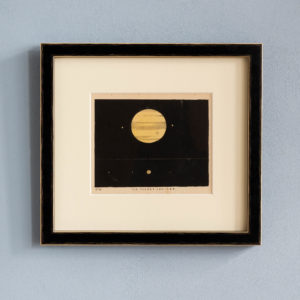
“The Beauty of the Heavens: A Pictorial Display of The Astronomical Phenomena of The Universe” by Charles Blunt, ‘The Planet Jupiter’,
£295 each“The Beauty of the Heavens: A Pictorial Display of The Astronomical Phenomena of The Universe” by Charles Blunt, ‘The Planet Jupiter’,
In the mid-19th century, Home Education had become very popular for the masses and lecturer, Charles Blunt seeing a gap in the market came up with these illustrations. Blunt who specialised in astronomy and natural philosophy, saw the need for a series of ‘accurate yet popular’ plates illustrating the known Universe. These hand-finished aquatints prints were based on Blunt’s own drawings, depicting celestial and astrological subjects.£295 each -
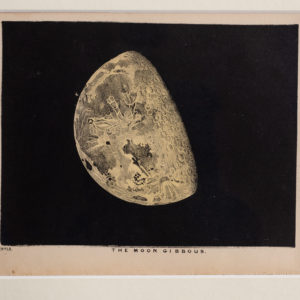
“The Beauty of the Heavens: A Pictorial Display of The Astronomical Phenomena of The Universe” by Charles Blunt, ‘The Moon Gibbous’,
£295 each“The Beauty of the Heavens: A Pictorial Display of The Astronomical Phenomena of The Universe” by Charles Blunt, ‘The Moon Gibbous’,
In the mid-19th century, Home Education had become very popular for the masses and lecturer, Charles Blunt seeing a gap in the market came up with these illustrations. Blunt who specialised in astronomy and natural philosophy, saw the need for a series of ‘accurate yet popular’ plates illustrating the known Universe. These hand-finished aquatints prints were based on Blunt’s own drawings, depicting celestial and astrological subjects.£295 each -
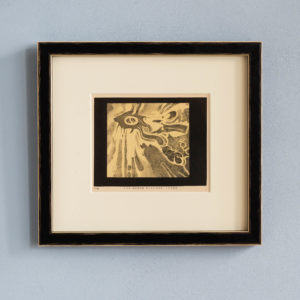
“The Beauty of the Heavens: A Pictorial Display of The Astronomical Phenomena of The Universe” by Charles Blunt, ‘The Moon’s Surface – Tycho’,
£295 each“The Beauty of the Heavens: A Pictorial Display of The Astronomical Phenomena of The Universe” by Charles Blunt, ‘The Moon’s Surface – Tycho’,
In the mid-19th century, Home Education had become very popular for the masses and lecturer, Charles Blunt seeing a gap in the market came up with these illustrations. Blunt who specialised in astronomy and natural philosophy, saw the need for a series of ‘accurate yet popular’ plates illustrating the known Universe. These hand-finished aquatints prints were based on Blunt’s own drawings, depicting celestial and astrological subjects.£295 each -
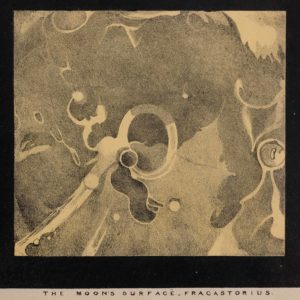
“The Beauty of the Heavens: A Pictorial Display of The Astronomical Phenomena of The Universe” by Charles Blunt, ‘The Moon’s Surface’,
£295 each“The Beauty of the Heavens: A Pictorial Display of The Astronomical Phenomena of The Universe” by Charles Blunt, ‘The Moon’s Surface’,
In the mid-19th century, Home Education had become very popular for the masses and lecturer, Charles Blunt seeing a gap in the market came up with these illustrations. Blunt who specialised in astronomy and natural philosophy, saw the need for a series of ‘accurate yet popular’ plates illustrating the known Universe. These hand-finished aquatints prints were based on Blunt’s own drawings, depicting celestial and astrological subjects.£295 each -
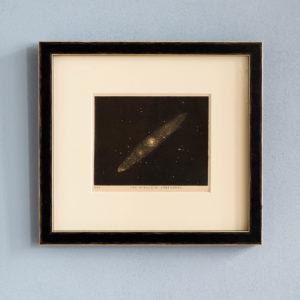
“The Beauty of the Heavens: A Pictorial Display of The Astronomical Phenomena of The Universe” by Charles Blunt, ‘The Nebula of Andromeda’,
£295 each“The Beauty of the Heavens: A Pictorial Display of The Astronomical Phenomena of The Universe” by Charles Blunt, ‘The Nebula of Andromeda’,
In the mid-19th century, Home Education had become very popular for the masses and lecturer, Charles Blunt seeing a gap in the market came up with these illustrations. Blunt who specialised in astronomy and natural philosophy, saw the need for a series of ‘accurate yet popular’ plates illustrating the known Universe. These hand-finished aquatints prints were based on Blunt’s own drawings, depicting celestial and astrological subjects.£295 each -
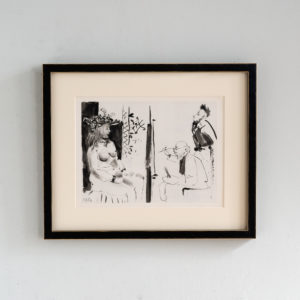
Picasso, Verve 1954
£295Picasso, Verve 1954
Original héliogravure print from Verve Vol. VIII, No 29/30 printed by the Master Printers Draeger Frères in 1954. Framed in black with a cream mount.£295 -
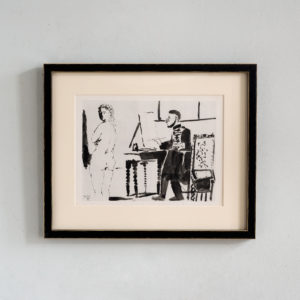
Picasso, Verve 1954
£295Picasso, Verve 1954
Original héliogravure print from Verve Vol. VIII, No 29/30 printed by the Master Printers Draeger Frères in 1954. Framed in black with a cream mount.£295 -
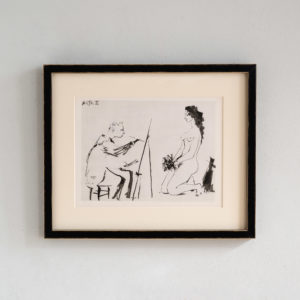
Picasso, Verve 1954
£295Picasso, Verve 1954
Original héliogravure print from Verve Vol. VIII, No 29/30 printed by the Master Printers Draeger Frères in 1954. Framed in black with a cream mount.£295 -
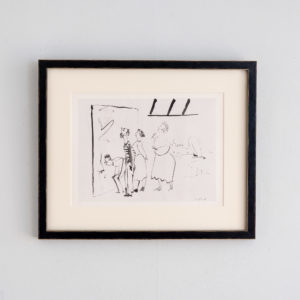
Picasso, Verve 1954
£295Picasso, Verve 1954
Original héliogravure print from Verve Vol. VIII, No 29/30 printed by the Master Printers Draeger Frères in 1954. Framed in black with a cream mount.£295 -
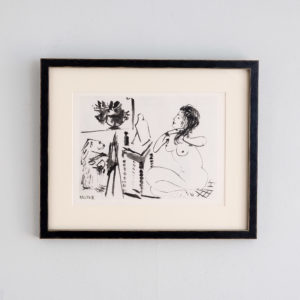
Picasso, Verve 1954
£295Picasso, Verve 1954
Original héliogravure print from Verve Vol. VIII, No 29/30 printed by the Master Printers Draeger Frères in 1954. Framed in black with a cream mount.£295 -
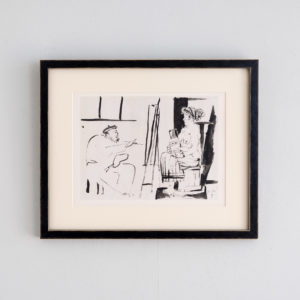
Picasso, Verve 1954
£295Picasso, Verve 1954
Original héliogravure print from Verve Vol. VIII, No 29/30 printed by the Master Printers Draeger Frères in 1954. Framed in black with a cream mount.£295 -
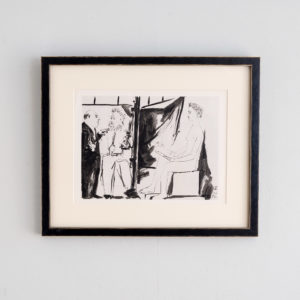
Picasso, Verve 1954
£295Picasso, Verve 1954
Original héliogravure print from Verve Vol. VIII, No 29/30 printed by the Master Printers Draeger Frères in 1954. Framed in black with a cream mount.£295 -
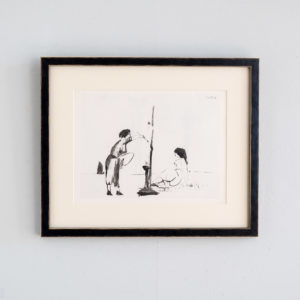
Picasso, Verve 1954
£295Picasso, Verve 1954
Original heliograuvre print from Verve Vol. VIII, No 29/30 printed by the Master Printers Draeger Frères in 1954. Framed in black with a cream mount.£295 -
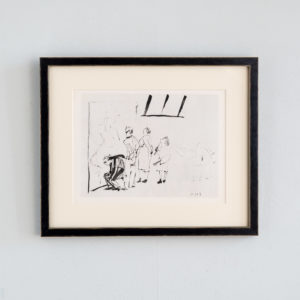
Picasso, Verve 1954
£295Picasso, Verve 1954
Original héliogravure print from Verve Vol. VIII, No 29/30 printed by the Master Printers Draeger Frères in 1954. Framed in black with a cream mount.£295 -
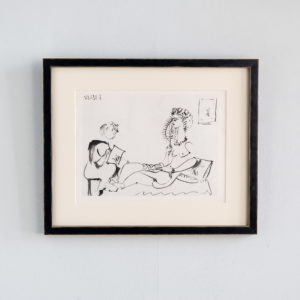
Picasso, Verve 1954
£295Picasso, Verve 1954
Original héliogravure print from Verve Vol. VIII, No 29/30 printed by the Master Printers Draeger Frères in 1954. Framed in black with a cream mount.£295 -
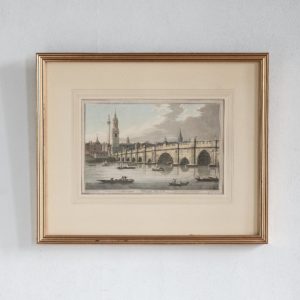
London Bridge
£295 -
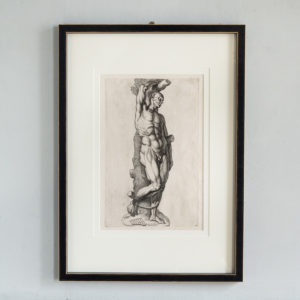
17th century copper-engravings of Classical Sculptures
£295 each17th century copper-engravings of Classical Sculptures
These prints are from a series showing the antique marble statues from the collection of Vincenzo Giustiniana, published by Joachim von Sandrart. These statues were on display in the 'Galleria Giustiniana del Marchese Vincenzo Giustiniani'. Sandrart assembled a team of mostly Dutch and French artists to produce the engravings for the Galleria, including Theodor Matham, Michael Natalis, Renier Persin, Cornelis Bloemaert, Claude Mellan, and Francois Perrier. The work was published in Rome circa 1636. Galleria served as a record of the antiquities and statues of the famous Giustiniani art collection. The Giustiniani brothers were exceedingly wealthy and descendants of the Genoese dynasty and became noted collectors of art. At the time of Vincenzo's death in 1637 he had amassed 600 paintings and 1800 ancient sculptures. Original copper-engraving, mounted and framed in black. Showing Marsyas.£295 each -
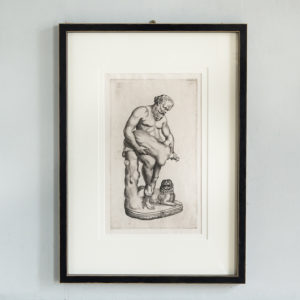
17th century copper-engravings of Classical Sculptures
£295 each17th century copper-engravings of Classical Sculptures
These prints are from a series showing the antique marble statues from the collection of Vincenzo Giustiniana, published by Joachim von Sandrart. These statues were on display in the 'Galleria Giustiniana del Marchese Vincenzo Giustiniani'. Sandrart assembled a team of mostly Dutch and French artists to produce the engravings for the Galleria, including Theodor Matham, Michael Natalis, Renier Persin, Cornelis Bloemaert, Claude Mellan, and Francois Perrier. The work was published in Rome circa 1636. Galleria served as a record of the antiquities and statues of the famous Giustiniani art collection. The Giustiniani brothers were exceedingly wealthy and descendants of the Genoese dynasty and became noted collectors of art. At the time of Vincenzo's death in 1637 he had amassed 600 paintings and 1800 ancient sculptures. Original copper-engraving, mounted and framed in black.£295 each -
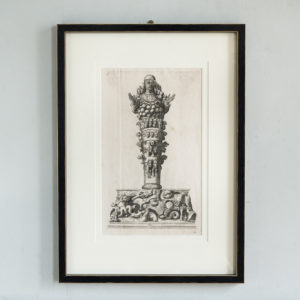
17th century copper-engravings of Classical Sculptures
£295 each17th century copper-engravings of Classical Sculptures
These prints are from a series showing the antique marble statues from the collection of Vincenzo Giustiniana, published by Joachim von Sandrart. These statues were on display in the 'Galleria Giustiniana del Marchese Vincenzo Giustiniani'. Sandrart assembled a team of mostly Dutch and French artists to produce the engravings for the Galleria, including Theodor Matham, Michael Natalis, Renier Persin, Cornelis Bloemaert, Claude Mellan, and Francois Perrier. The work was published in Rome circa 1636. Galleria served as a record of the antiquities and statues of the famous Giustiniani art collection. The Giustiniani brothers were exceedingly wealthy and descendants of the Genoese dynasty and became noted collectors of art. At the time of Vincenzo's death in 1637 he had amassed 600 paintings and 1800 ancient sculptures. Original copper-engraving, mounted and framed in black.£295 each -
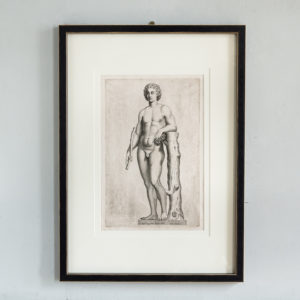
17th century copper-engravings of Classical Sculptures
£295 each17th century copper-engravings of Classical Sculptures
These prints are from a series showing the antique marble statues from the collection of Vincenzo Giustiniana, published by Joachim von Sandrart. These statues were on display in the 'Galleria Giustiniana del Marchese Vincenzo Giustiniani'. Sandrart assembled a team of mostly Dutch and French artists to produce the engravings for the Galleria, including Theodor Matham, Michael Natalis, Renier Persin, Cornelis Bloemaert, Claude Mellan, and Francois Perrier. The work was published in Rome circa 1636. Galleria served as a record of the antiquities and statues of the famous Giustiniani art collection. The Giustiniani brothers were exceedingly wealthy and descendants of the Genoese dynasty and became noted collectors of art. At the time of Vincenzo's death in 1637 he had amassed 600 paintings and 1800 ancient sculptures. Original copper-engraving, mounted and framed in black.£295 each -
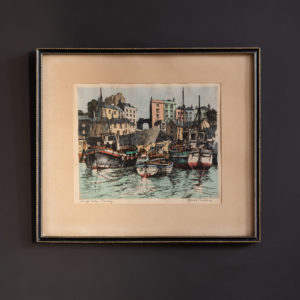
High Tide, Tenby.
£280High Tide, Tenby.
A framed aquatint by the English painter and printmaker James Priddey FRSA showing a group of small boats and fishing craft huddled beside the sea wall of Tenby harbour on the Pembrokeshire coast.£280 -
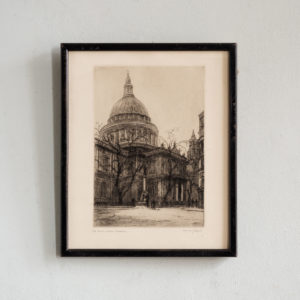
St. Pauls from Cheapside
£280St. Pauls from Cheapside
A framed pencil drawing by Dorothy Sweet showing the northern transept and part of the north quire aisle of St Pauls over St Pauls Churchyard, viewed from the the junction of Cheapside and Paternoster Row. Signed by the artist in pencil.£280 -
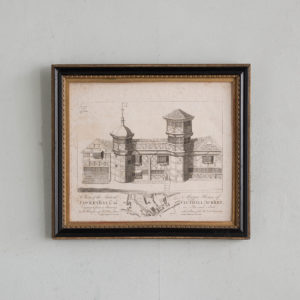
View of the Antient Manor House of Fawkeshall
£280View of the Antient Manor House of Fawkeshall
Historical engraving featuring a map of the area. Presented in a Hogarth pattern frame.£280 -
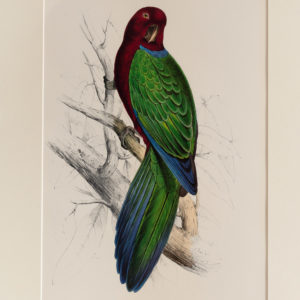
Parrots by Edward Lear – Tabuan Parrakeet,
£275Parrots by Edward Lear – Tabuan Parrakeet,
Edward Lear began his career as a zoological illustrator, working in the Parrot House at London Zoo. This resulted in the publication of Illustrations of the family of Psittacidae, or parrots, the greater part of them species hitherto unfigured in 1832. The first plates for the book were issued in 1830 when he was still only 18.£275 -
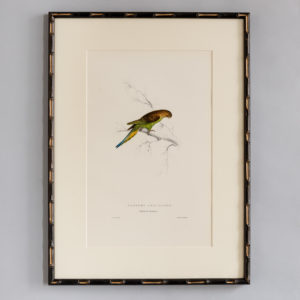
Parrots by Edward Lear – Undulated Parrakeet,
£275Parrots by Edward Lear – Undulated Parrakeet,
Edward Lear began his career as a zoological illustrator, working in the Parrot House at London Zoo. This resulted in the publication of Illustrations of the family of Psittacidae, or parrots, the greater part of them species hitherto unfigured in 1832. The first plates for the book were issued in 1830 when he was still only 18.£275 -
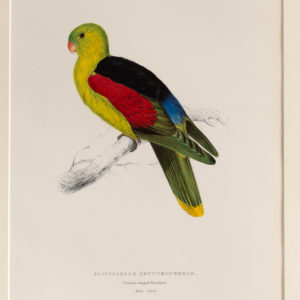
Parrots by Edward Lear – Crimson-winged Parrakeet,
£275Parrots by Edward Lear – Crimson-winged Parrakeet,
Edward Lear began his career as a zoological illustrator, working in the Parrot House at London Zoo. This resulted in the publication of Illustrations of the family of Psittacidae, or parrots, the greater part of them species hitherto unfigured in 1832. The first plates for the book were issued in 1830 when he was still only 18.£275 -
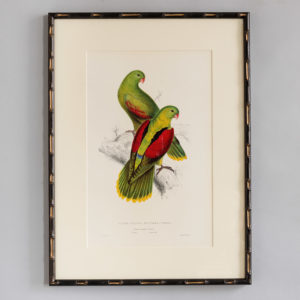
Parrots by Edward Lear – Crimson-winged Parrakeet,
£275Parrots by Edward Lear – Crimson-winged Parrakeet,
Edward Lear began his career as a zoological illustrator, working in the Parrot House at London Zoo. This resulted in the publication of Illustrations of the family of Psittacidae, or parrots, the greater part of them species hitherto unfigured in 1832. The first plates for the book were issued in 1830 when he was still only 18.£275 -
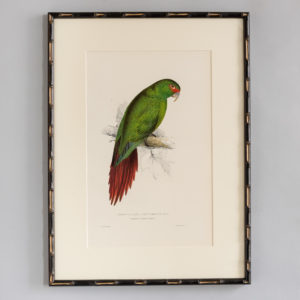
Parrots by Edward Lear – Long-billed Parrakeet-Maccaw,
£275Parrots by Edward Lear – Long-billed Parrakeet-Maccaw,
Edward Lear began his career as a zoological illustrator, working in the Parrot House at London Zoo. This resulted in the publication of Illustrations of the family of Psittacidae, or parrots, the greater part of them species hitherto unfigured in 1832. The first plates for the book were issued in 1830 when he was still only 18.£275 -
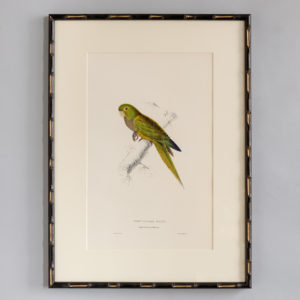
Parrots by Edward Lear – Dwarf Parrakeet Maccaw,
£275Parrots by Edward Lear – Dwarf Parrakeet Maccaw,
Edward Lear began his career as a zoological illustrator, working in the Parrot House at London Zoo. This resulted in the publication of Illustrations of the family of Psittacidae, or parrots, the greater part of them species hitherto unfigured in 1832. The first plates for the book were issued in 1830 when he was still only 18.£275 -
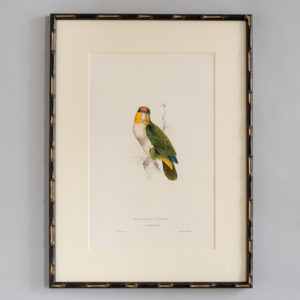
Parrots by Edward Lear – Bay-headed Parrot,
£275Parrots by Edward Lear – Bay-headed Parrot,
Edward Lear began his career as a zoological illustrator, working in the Parrot House at London Zoo. This resulted in the publication of Illustrations of the family of Psittacidae, or parrots, the greater part of them species hitherto unfigured in 1832. The first plates for the book were issued in 1830 when he was still only 18.£275 -
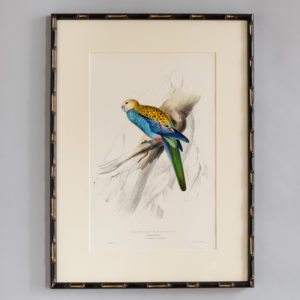
Parrots by Edward Lear – Paleheaded Parrakeet,
£275Parrots by Edward Lear – Paleheaded Parrakeet,
Edward Lear began his career as a zoological illustrator, working in the Parrot House at London Zoo. This resulted in the publication of Illustrations of the family of Psittacidae, or parrots, the greater part of them species hitherto unfigured in 1832. The first plates for the book were issued in 1830 when he was still only 18.£275 -
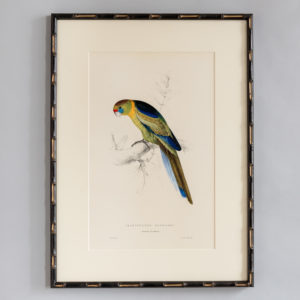
Parrots by Edward Lear – Barnard’s Parrakeet,
£275Parrots by Edward Lear – Barnard’s Parrakeet,
Edward Lear began his career as a zoological illustrator, working in the Parrot House at London Zoo. This resulted in the publication of Illustrations of the family of Psittacidae, or parrots, the greater part of them species hitherto unfigured in 1832. The first plates for the book were issued in 1830 when he was still only 18.£275 -
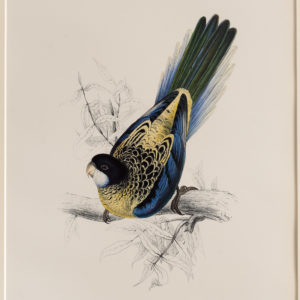
Parrots by Edward Lear – Brown’s Parrakeet,
£275Parrots by Edward Lear – Brown’s Parrakeet,
Edward Lear began his career as a zoological illustrator, working in the Parrot House at London Zoo. This resulted in the publication of Illustrations of the family of Psittacidae, or parrots, the greater part of them species hitherto unfigured in 1832. The first plates for the book were issued in 1830 when he was still only 18.£275 -
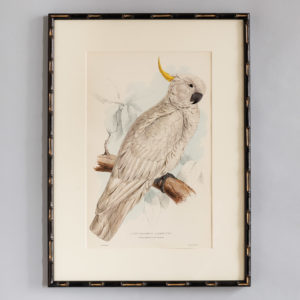
Parrots by Edward Lear – Greater Sulphur-crested Cockatoo,
£275Parrots by Edward Lear – Greater Sulphur-crested Cockatoo,
Edward Lear began his career as a zoological illustrator, working in the Parrot House at London Zoo. This resulted in the publication of Illustrations of the family of Psittacidae, or parrots, the greater part of them species hitherto unfigured in 1832. The first plates for the book were issued in 1830 when he was still only 18.£275 -
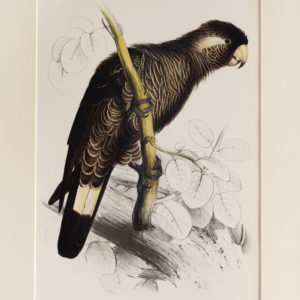
Parrots by Edward Lear – Baudin’s Cockatoo
£275Parrots by Edward Lear – Baudin’s Cockatoo
Edward Lear began his career as a zoological illustrator, working in the Parrot House at London Zoo. This resulted in the publication of Illustrations of the family of Psittacidae, or parrots, the greater part of them species hitherto unfigured in 1832. The first plates for the book were issued in 1830 when he was still only 18.£275 -
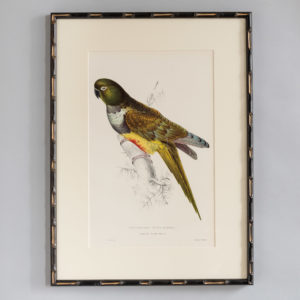
Parrots by Edward Lear – Patagonian Parrakeet-Maccaw
£275Parrots by Edward Lear – Patagonian Parrakeet-Maccaw
Edward Lear began his career as a zoological illustrator, working in the Parrot House at London Zoo. This resulted in the publication of Illustrations of the family of Psittacidae, or parrots, the greater part of them species hitherto unfigured in 1832. The first plates for the book were issued in 1830 when he was still only 18.£275 -
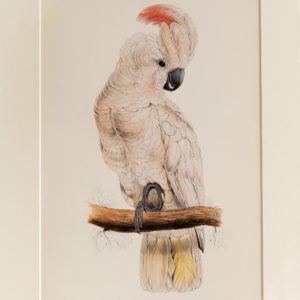
Parrots by Edward Lear – Salmon-crested Cockatoo
£275Parrots by Edward Lear – Salmon-crested Cockatoo
Edward Lear began his career as a zoological illustrator, working in the Parrot House at London Zoo. This resulted in the publication of Illustrations of the family of Psittacidae, or parrots, the greater part of them species hitherto unfigured in 1832. The first plates for the book were issued in 1830 when he was still only 18.£275 -
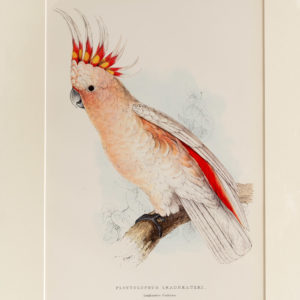
Parrots by Edward Lear – Leadbeater’s Cockatoo,
£275Parrots by Edward Lear – Leadbeater’s Cockatoo,
Edward Lear began his career as a zoological illustrator, working in the Parrot House at London Zoo. This resulted in the publication of Illustrations of the family of Psittacidae, or parrots, the greater part of them species hitherto unfigured in 1832. The first plates for the book were issued in 1830 when he was still only 18.£275 -

Sir Winston Churchill
£270Sir Winston Churchill
A framed, Mid 20th Century lithograph depicting Sir Winston Churchill in the manner of the controversial and now lost John Sutherland portrait of 1949.£270 -
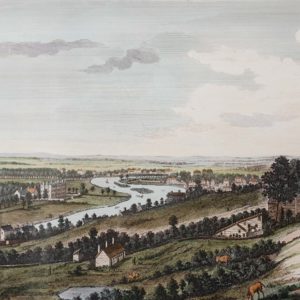
West View of Richmond from the Star & Garter
£270West View of Richmond from the Star & Garter
A framed and mounted, hand coloured engraving showing the Thames valley looking west over Richmond and Twickenham from a position besides the famous Star and Garter hotel at the top of Richmond Hill.£270 -
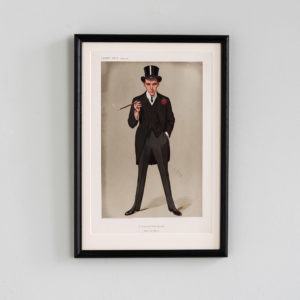
A Successful First Speech,
£270A Successful First Speech,
Framed chromolithograph by SPY (Sir Leslie Ward) picturing Mr Fredrick Edwin Smith, later 1st Earl of Birkenhead, MP for Liverpool Walton and boon companion of Sir Winston Churchill until his early death. The subtitle, 'Moab is my Washpot', is from psalm 108 and is a proverbial declaration of total triumph over vanquished foes. F.E Smith is famed in Parliamentary history for his maiden speech in the House, known as 'I Warn The Government', described by the late Paul Johnson as "without question the most famous maiden speech in history, quite unprecedented, and never equalled since." In it he accused the Liberal government of arrogance, dishonesty and heavy handedness after their landslide victory at the election of 1906. He managed to catch David Lloyd George in a clear untruth and won the begrudging admiration of all sides of the house. He declared, in response to a suggestion by Lloyd George to the churches of Wales that the Tories wanted to 'introduce slavery to the hills of Wales' that: "I have no means of judging how heaven will deal with persons who think it decent to make such suggestions. The distinction drawn by the Right Hon. Gentleman is more worthy of the county court than of the Treasury Bench." He then went on famously to declare: "I venture to warn the government that the people of this country will neither forget nor forgive a party which, in the heyday of its triumph, denies to the infant Parliament of the Empire one jot or tittle of that ancient liberty of speech which our predecessors in this House vindicated for themselves at the point of the sword." He was a, according to the ONDB a 'champion of hard-drinking patriotic men' in the face of the temperance movement before his early death of cirrhosis of the liver.£270 -
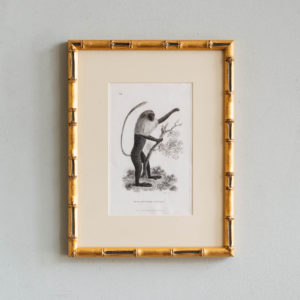
Monkeys – Full-Bottom Monkey,
£260 EachMonkeys – Full-Bottom Monkey,
The English Encyclopaedia was published in 1802 by George Kearsley and it gave an unusual insight into early 19th century new discoveries in zoology.£260 Each -
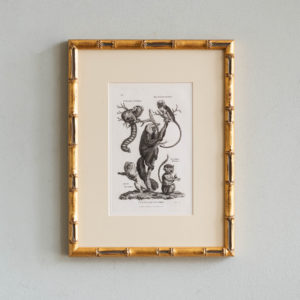
Monkeys – Striated Monkey, Red Tailed-Monkey,
£260 EachMonkeys – Striated Monkey, Red Tailed-Monkey,
The English Encyclopaedia was published in 1802 by George Kearsley and it gave an unusual insight into early 19th century new discoveries in zoology.£260 Each -
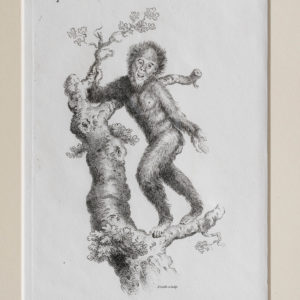
Monkeys – Oran Otan
£260 EachMonkeys – Oran Otan
The English Encyclopaedia was published in 1802 by George Kearsley and it gave an unusual insight into early 19th century new discoveries in zoology.£260 Each -
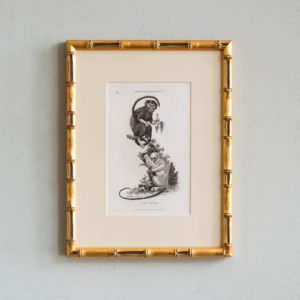
Monkeys – Great-Eared Monkey, and Fair Monkey,
£260 EachMonkeys – Great-Eared Monkey, and Fair Monkey,
The English Encyclopaedia was published in 1802 by George Kearsley and it gave an unusual insight into early 19th century new discoveries in zoology.£260 Each -
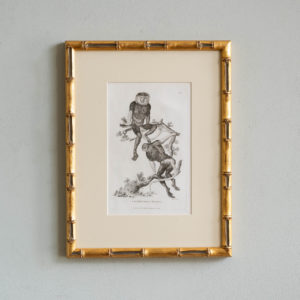
Monkeys – Cochinchina Monkey,
£260 EachMonkeys – Cochinchina Monkey,
The English Encyclopaedia was published in 1802 by George Kearsley and it gave an unusual insight into early 19th century new discoveries in zoology.£260 Each -
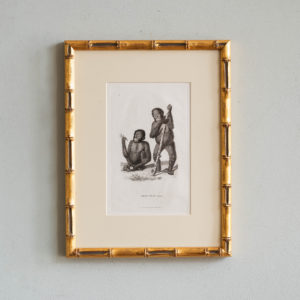
Monkeys – Oran Otan,
£260 EachMonkeys – Oran Otan,
The English Encyclopaedia was published in 1802 by George Kearsley and it gave an unusual insight into early 19th century new discoveries in zoology.£260 Each -
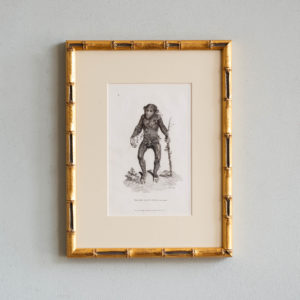
Monkeys – Black Oran-Otan,
£260 EachMonkeys – Black Oran-Otan,
The English Encyclopaedia was published in 1802 by George Kearsley and it gave an unusual insight into early 19th century new discoveries in zoology.£260 Each -
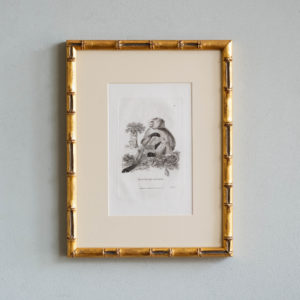
Monkeys – Dog-Faced Baboon,
£260 EachMonkeys – Dog-Faced Baboon,
The English Encyclopaedia was published in 1802 by George Kearsley and it gave an unusual insight into early 19th century new discoveries in zoology.£260 Each -
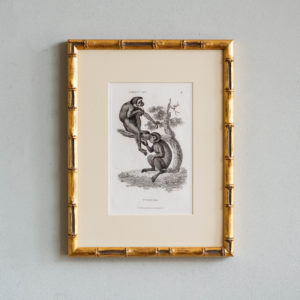
Monkeys – Pygmy Ape, and Alpinus Ape,
£260 EachMonkeys – Pygmy Ape, and Alpinus Ape,
The English Encyclopaedia was published in 1802 by George Kearsley and it gave an unusual insight into early 19th century new discoveries in zoology.£260 Each -
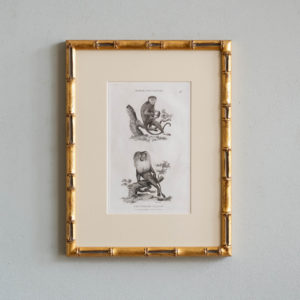
Monkeys – Hare-Lipped Monkey, and Lion-Tailed Monkey,
£260 EachMonkeys – Hare-Lipped Monkey, and Lion-Tailed Monkey,
The English Encyclopaedia was published in 1802 by George Kearsley and it gave an unusual insight into early 19th century new discoveries in zoology.£260 Each -
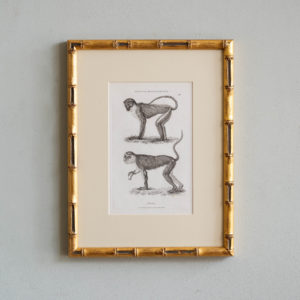
Monkeys – Spotted, or Diana Monkey and Mona,
£260 EachMonkeys – Spotted, or Diana Monkey and Mona,
The English Encyclopaedia was published in 1802 by George Kearsley and it gave an unusual insight into early 19th century new discoveries in zoology.£260 Each -
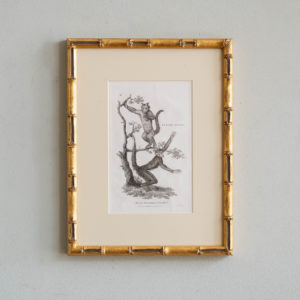
Monkeys – Horned Monkey and Four-Fingered Monkey
£260 EachMonkeys – Horned Monkey and Four-Fingered Monkey
The English Encyclopaedia was published in 1802 by George Kearsley and it gave an unusual insight into early 19th century new discoveries in zoology.£260 Each -
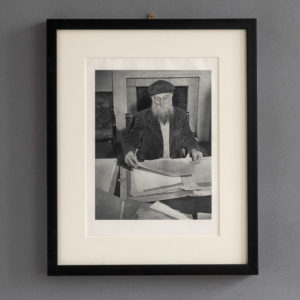
Photographs from Verve, December 1937. Portrait of Aristide Maillol
£250 eachPhotographs from Verve, December 1937. Portrait of Aristide Maillol
The Verve Review, from its very inception, was a purposefully luxurious art publication. It ran from 1937 to 1960, but for only 38 editions, due to the high degree of design and editorial work dedicated to each issue. Its editor was Stratis Eleftheriades, a Greek National who moved to Paris in the early thirties to take part in the growing Modernist movement, writing under the name of Teriade. As an art critic, patron and gallery owner he commissioned various individuals, artists, photographers and philosophers to contribute to it. Héliogravure is a process for printing photographs that was developed in the first half of the 19th century. It is a photo-mechanical process whereby a copper plate is grained and then coated with a light-sensitive gelatin tissue which had been exposed to a film positive, and then etched, resulting in a high-quality intaglio plate that can reproduce detailed continuous tones of a photograph.£250 each -
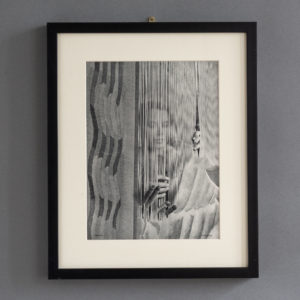
Photographs from Verve, December 1937. Gobelins / Makowska
£250 eachPhotographs from Verve, December 1937. Gobelins / Makowska
The Verve Review, from its very inception, was a purposefully luxurious art publication. It ran from 1937 to 1960, but for only 38 editions, due to the high degree of design and editorial work dedicated to each issue. Its editor was Stratis Eleftheriades, a Greek National who moved to Paris in the early thirties to take part in the growing Modernist movement, writing under the name of Teriade. As an art critic, patron and gallery owner he commissioned various individuals, artists, photographers and philosophers to contribute to it. Héliogravure is a process for printing photographs that was developed in the first half of the 19th century. It is a photo-mechanical process whereby a copper plate is grained and then coated with a light-sensitive gelatin tissue which had been exposed to a film positive, and then etched, resulting in a high-quality intaglio plate that can reproduce detailed continuous tones of a photograph.£250 each -
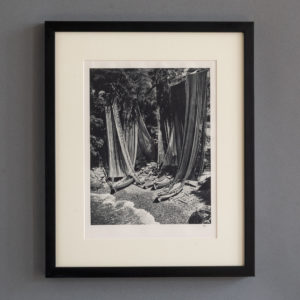
Photographs from Verve, December 1937. Gil
£250 eachPhotographs from Verve, December 1937. Gil
The Verve Review, from its very inception, was a purposefully luxurious art publication. It ran from 1937 to 1960, but for only 38 editions, due to the high degree of design and editorial work dedicated to each issue. Its editor was Stratis Eleftheriades, a Greek National who moved to Paris in the early thirties to take part in the growing Modernist movement, writing under the name of Teriade. As an art critic, patron and gallery owner he commissioned various individuals, artists, photographers and philosophers to contribute to it. Héliogravure is a process for printing photographs that was developed in the first half of the 19th century. It is a photo-mechanical process whereby a copper plate is grained and then coated with a light-sensitive gelatin tissue which had been exposed to a film positive, and then etched, resulting in a high-quality intaglio plate that can reproduce detailed continuous tones of a photograph.£250 each -
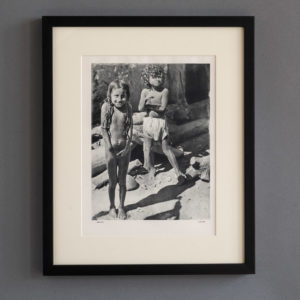
Photographs from Verve, December 1937. Henri Cartier-Bresson
£250 eachPhotographs from Verve, December 1937. Henri Cartier-Bresson
The Verve Review, from its very inception, was a purposefully luxurious art publication. It ran from 1937 to 1960, but for only 38 editions, due to the high degree of design and editorial work dedicated to each issue. Its editor was Stratis Eleftheriades, a Greek National who moved to Paris in the early thirties to take part in the growing Modernist movement, writing under the name of Teriade. As an art critic, patron and gallery owner he commissioned various individuals, artists, photographers and philosophers to contribute to it. Héliogravure is a process for printing photographs that was developed in the first half of the 19th century. It is a photo-mechanical process whereby a copper plate is grained and then coated with a light-sensitive gelatin tissue which had been exposed to a film positive, and then etched, resulting in a high-quality intaglio plate that can reproduce detailed continuous tones of a photograph.£250 each -
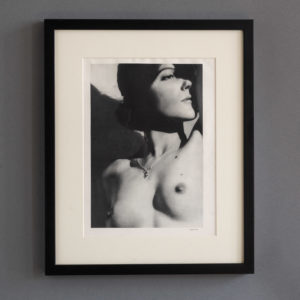
Photographs from Verve, December 1937. Man Ray
£250 eachPhotographs from Verve, December 1937. Man Ray
The Verve Review, from its very inception, was a purposefully luxurious art publication. It ran from 1937 to 1960, but for only 38 editions, due to the high degree of design and editorial work dedicated to each issue. Its editor was Stratis Eleftheriades, a Greek National who moved to Paris in the early thirties to take part in the growing Modernist movement, writing under the name of Teriade. As an art critic, patron and gallery owner he commissioned various individuals, artists, photographers and philosophers to contribute to it. Héliogravure is a process for printing photographs that was developed in the first half of the 19th century. It is a photo-mechanical process whereby a copper plate is grained and then coated with a light-sensitive gelatin tissue which had been exposed to a film positive, and then etched, resulting in a high-quality intaglio plate that can reproduce detailed continuous tones of a photograph.£250 each -
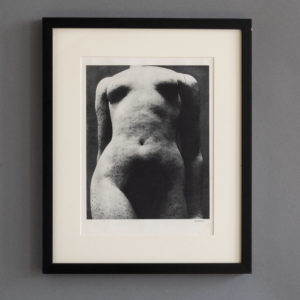
Photographs from Verve, December 1937. Erwin Blumenfeld
£250 eachPhotographs from Verve, December 1937. Erwin Blumenfeld
The Verve Review, from its very inception, was a purposefully luxurious art publication. It ran from 1937 to 1960, but for only 38 editions, due to the high degree of design and editorial work dedicated to each issue. Its editor was Stratis Eleftheriades, a Greek National who moved to Paris in the early thirties to take part in the growing Modernist movement, writing under the name of Teriade. As an art critic, patron and gallery owner he commissioned various individuals, artists, photographers and philosophers to contribute to it. Héliogravure is a process for printing photographs that was developed in the first half of the 19th century. It is a photo-mechanical process whereby a copper plate is grained and then coated with a light-sensitive gelatin tissue which had been exposed to a film positive, and then etched, resulting in a high-quality intaglio plate that can reproduce detailed continuous tones of a photograph.£250 each -
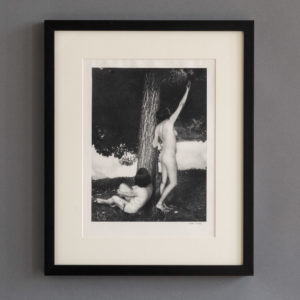
Photographs from Verve, December 1937. Nora Dumas
£250 eachPhotographs from Verve, December 1937. Nora Dumas
The Verve Review, from its very inception, was a purposefully luxurious art publication. It ran from 1937 to 1960, but for only 38 editions, due to the high degree of design and editorial work dedicated to each issue. Its editor was Stratis Eleftheriades, a Greek National who moved to Paris in the early thirties to take part in the growing Modernist movement, writing under the name of Teriade. As an art critic, patron and gallery owner he commissioned various individuals, artists, photographers and philosophers to contribute to it. Héliogravure is a process for printing photographs that was developed in the first half of the 19th century. It is a photo-mechanical process whereby a copper plate is grained and then coated with a light-sensitive gelatin tissue which had been exposed to a film positive, and then etched, resulting in a high-quality intaglio plate that can reproduce detailed continuous tones of a photograph.£250 each -
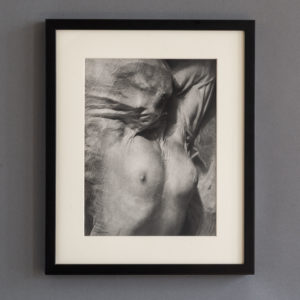
Photographs from Verve, December 1937. Erwin Blumenfeld
£250 eachPhotographs from Verve, December 1937. Erwin Blumenfeld
The Verve Review, from its very inception, was a purposefully luxurious art publication. It ran from 1937 to 1960, but for only 38 editions, due to the high degree of design and editorial work dedicated to each issue. Its editor was Stratis Eleftheriades, a Greek National who moved to Paris in the early thirties to take part in the growing Modernist movement, writing under the name of Teriade. As an art critic, patron and gallery owner he commissioned various individuals, artists, photographers and philosophers to contribute to it. Héliogravure is a process for printing photographs that was developed in the first half of the 19th century. It is a photo-mechanical process whereby a copper plate is grained and then coated with a light-sensitive gelatin tissue which had been exposed to a film positive, and then etched, resulting in a high-quality intaglio plate that can reproduce detailed continuous tones of a photograph.£250 each -
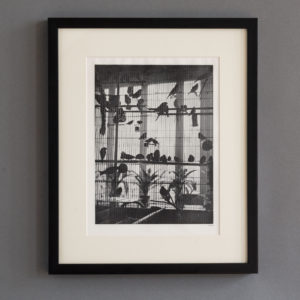
Photographs from Verve, December 1937. Brassaï
£250 eachPhotographs from Verve, December 1937. Brassaï
The Verve Review, from its very inception, was a purposefully luxurious art publication. It ran from 1937 to 1960, but for only 38 editions, due to the high degree of design and editorial work dedicated to each issue. Its editor was Stratis Eleftheriades, a Greek National who moved to Paris in the early thirties to take part in the growing Modernist movement, writing under the name of Teriade. As an art critic, patron and gallery owner he commissioned various individuals, artists, photographers and philosophers to contribute to it. Héliogravure is a process for printing photographs that was developed in the first half of the 19th century. It is a photo-mechanical process whereby a copper plate is grained and then coated with a light-sensitive gelatin tissue which had been exposed to a film positive, and then etched, resulting in a high-quality intaglio plate that can reproduce detailed continuous tones of a photograph.£250 each -
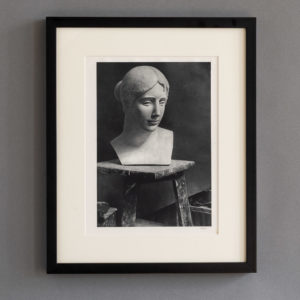
Photographs from Verve, December 1937. Brassaï
£250 eachPhotographs from Verve, December 1937. Brassaï
The Verve Review, from its very inception, was a purposefully luxurious art publication. It ran from 1937 to 1960, but for only 38 editions, due to the high degree of design and editorial work dedicated to each issue. Its editor was Stratis Eleftheriades, a Greek National who moved to Paris in the early thirties to take part in the growing Modernist movement, writing under the name of Teriade. As an art critic, patron and gallery owner he commissioned various individuals, artists, photographers and philosophers to contribute to it. Héliogravure is a process for printing photographs that was developed in the first half of the 19th century. It is a photo-mechanical process whereby a copper plate is grained and then coated with a light-sensitive gelatin tissue which had been exposed to a film positive, and then etched, resulting in a high-quality intaglio plate that can reproduce detailed continuous tones of a photograph.£250 each -
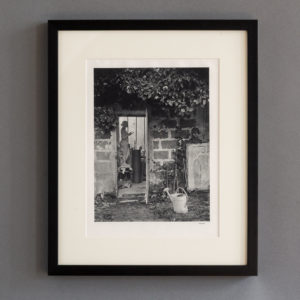
Photographs from Verve, December 1937. Brassaï
£250 eachPhotographs from Verve, December 1937. Brassaï
The Verve Review, from its very inception, was a purposefully luxurious art publication. It ran from 1937 to 1960, but for only 38 editions, due to the high degree of design and editorial work dedicated to each issue. Its editor was Stratis Eleftheriades, a Greek National who moved to Paris in the early thirties to take part in the growing Modernist movement, writing under the name of Teriade. As an art critic, patron and gallery owner he commissioned various individuals, artists, photographers and philosophers to contribute to it. Héliogravure is a process for printing photographs that was developed in the first half of the 19th century. It is a photo-mechanical process whereby a copper plate is grained and then coated with a light-sensitive gelatin tissue which had been exposed to a film positive, and then etched, resulting in a high-quality intaglio plate that can reproduce detailed continuous tones of a photograph.£250 each -
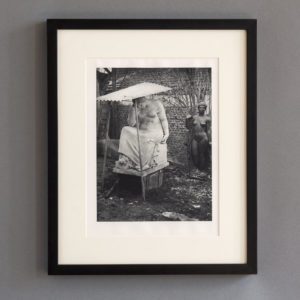
Photographs from Verve, December 1937. Brassaï
£250 eachPhotographs from Verve, December 1937. Brassaï
The Verve Review, from its very inception, was a purposefully luxurious art publication. It ran from 1937 to 1960, but for only 38 editions, due to the high degree of design and editorial work dedicated to each issue. Its editor was Stratis Eleftheriades, a Greek National who moved to Paris in the early thirties to take part in the growing Modernist movement, writing under the name of Teriade. As an art critic, patron and gallery owner he commissioned various individuals, artists, photographers and philosophers to contribute to it. Héliogravure is a process for printing photographs that was developed in the first half of the 19th century. It is a photo-mechanical process whereby a copper plate is grained and then coated with a light-sensitive gelatin tissue which had been exposed to a film positive, and then etched, resulting in a high-quality intaglio plate that can reproduce detailed continuous tones of a photograph.£250 each -
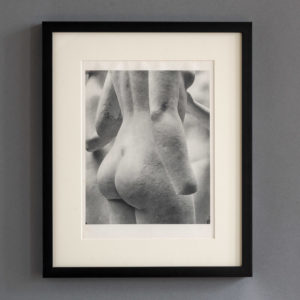
Photographs from Verve, December 1937. Brassaï
£250 eachPhotographs from Verve, December 1937. Brassaï
The Verve Review, from its very inception, was a purposefully luxurious art publication. It ran from 1937 to 1960, but for only 38 editions, due to the high degree of design and editorial work dedicated to each issue. Its editor was Stratis Eleftheriades, a Greek National who moved to Paris in the early thirties to take part in the growing Modernist movement, writing under the name of Teriade. As an art critic, patron and gallery owner he commissioned various individuals, artists, photographers and philosophers to contribute to it. Héliogravure is a process for printing photographs that was developed in the first half of the 19th century. It is a photo-mechanical process whereby a copper plate is grained and then coated with a light-sensitive gelatin tissue which had been exposed to a film positive, and then etched, resulting in a high-quality intaglio plate that can reproduce detailed continuous tones of a photograph.£250 each
Featured Items
-
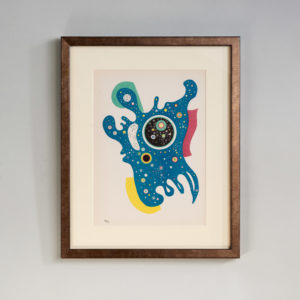
Stars by Wassily Kandinsky, Verve Vol. 1 / No. 2.
£800Stars by Wassily Kandinsky, Verve Vol. 1 / No. 2.
The Verve Review was a purposefully luxurious. It ran from 1937 to 1960, but with only 38 editions available, due to the high degree of design and editorial work dedicated to each issue. Each edition contained unique lithographic prints, commissioned by the editor, and each cover a double-page lithograph elaborated by one of the artists contained within. It was the brainchild of its editor Stratis Eleftheriades, a Greek National who moved to Paris in the early thirties to take part in the growing Modernist movement, writing under the name of Teriade.£800 -
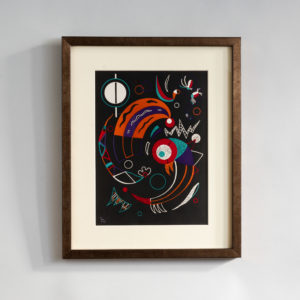
Comets by Wassily Kandinsky, Verve Vol. 1 / No. 2.
£800Comets by Wassily Kandinsky, Verve Vol. 1 / No. 2.
The Verve Review was a purposefully luxurious. It ran from 1937 to 1960, but with only 38 editions available, due to the high degree of design and editorial work dedicated to each issue. Each edition contained unique lithographic prints, commissioned by the editor, and each cover a double-page lithograph elaborated by one of the artists contained within. It was the brainchild of its editor Stratis Eleftheriades, a Greek National who moved to Paris in the early thirties to take part in the growing Modernist movement, writing under the name of Teriade.£800 -

The Dance, by Henri Matisse, Jan – March 1939 / No. 4.
£1,200The Dance, by Henri Matisse, Jan – March 1939 / No. 4.
The Verve Review was a purposefully luxurious. It ran from 1937 to 1960, but with only 38 editions available, due to the high degree of design and editorial work dedicated to each issue. Each edition contained unique lithographic prints, commissioned by the editor, and each cover a double-page lithograph elaborated by one of the artists contained within. It was the brainchild of its editor Stratis Eleftheriades, a Greek National who moved to Paris in the early thirties to take part in the growing Modernist movement, writing under the name of Teriade.£1,200 -
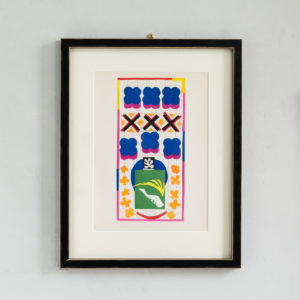
Henri Matisse, ‘The Last Works of Henri Matisse’
£900 eachHenri Matisse, ‘The Last Works of Henri Matisse’
From Verve Vol. IX No. 35/36 published by Tériade under the title 'The Last Works of Henri Matisse'£900 each

